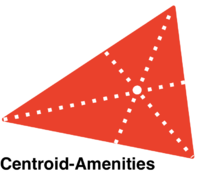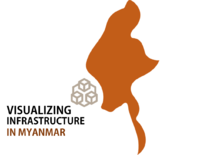Difference between revisions of "Project Groups"
| (5 intermediate revisions by 3 users not shown) | |||
| Line 46: | Line 46: | ||
Singapore Risk Elements | Singapore Risk Elements | ||
|| | || | ||
| − | + | Since 2014, Singapore has been striving to achieve the vision of being a smart nation. The most integral step in this direction is the analysis and assessment of risk, for it is only by doing so that we can build a healthy, safe and prepared smart nation. After all the steps taken by the Singaporean government and society to be more risk-free, it is important to understand our vulnerability - in terms of dominant contributing factors, location and key institutions that could potentially be affected by these risks. To address this, we identify the risks posed to a specific target group of the population, school students, so as to narrow our focus and understand these risks better. We have chosen 3 risk categories as our focus - health risk (exposure to tobacco and unhealthy eateries), entertainment risk (exposure to arcades) and terrorist risk (as this is a sensitive issue, we use exposure to petrol stations as a representative of the same). Additionally, we will analyse the public service infrastructure in place in terms of 24-hour response institutions. We demonstrate the potential of R shiny app using an interactive map to explore and analyse both sides of vulnerability and preparedness with respect to risk. | |
|| | || | ||
* [[RiskMappers_Proposal|Project Details]] | * [[RiskMappers_Proposal|Project Details]] | ||
| Line 76: | Line 76: | ||
|[[File:BUZZ.PNG|200px|advantAGE_Home]] | |[[File:BUZZ.PNG|200px|advantAGE_Home]] | ||
|| | || | ||
| − | + | Analyse public bus network in Singapore | |
|| | || | ||
| − | + | For those living towards the periphery of Singapore, public buses can be quite bad in terms of travel time. There is no clear distinction between a feeder bus and a long distance bus as there are bus services that cut across towns before hitting the expressway, into Singapore’s downtown. For a destination that is 30-40 minutes of travel time by train, public buses can take 45 minutes to an hour. | |
| − | + | Therefore, through this project, we aim to create a tool to analyse the connectivity of public buses in Singapore. | |
|| | || | ||
* [[advantAGE_Proposal|Project Details]] | * [[advantAGE_Proposal|Project Details]] | ||
| Line 98: | Line 98: | ||
<center>[[File:PARCFINDER_logo_.png|200px|1718t2is415T8|Group 8]]</center><br/> | <center>[[File:PARCFINDER_logo_.png|200px|1718t2is415T8|Group 8]]</center><br/> | ||
|| | || | ||
| − | <center> | + | <center>Visualising Geographical Accessibility and Spatial Analysis of Self-Collection Points in Singapore</center> |
|| | || | ||
| − | + | A study by the NUS Logistics Institute - Asia Pacific shows that as of 2017, the delivery failure rates in Singapore hover at more than 15%. | |
| − | + | Our team has explored the Self-Collection Points as a viable solution in addressing the issue of missed deliveries. We recognise the importance for Logistic Companies to be able to determine the location of their self-collection points, in order to maximise coverage as well as improving their last-mile delivery service experience for their customers. | |
| + | |||
| + | Through the conceptualisation of our application - ParcFinder, we provide users with the tools to visualise the geographical accessibility and generate spatial analysis reports of their existing self-collection points. | ||
| − | |||
|| | || | ||
*[[ParcFinder_Proposal|Project Details]] | *[[ParcFinder_Proposal|Project Details]] | ||
*[[ParcFinder_Poster|Poster]] | *[[ParcFinder_Poster|Poster]] | ||
| − | *[[ | + | *[[ParcFinder_Project_Application|Application]] |
*[[ParcFinder_Research Paper|Research Paper]] | *[[ParcFinder_Research Paper|Research Paper]] | ||
|| | || | ||
| Line 115: | Line 116: | ||
* LEE Zhi Hui | * LEE Zhi Hui | ||
|| | || | ||
| + | Singapore Post, Logistic Companies - bluPort, NinjaCollect | ||
| + | |||
|- | |- | ||
| − | |||
|[[File:Filler.png|200px|Centroid-Amenities_Project_Details]] | |[[File:Filler.png|200px|Centroid-Amenities_Project_Details]] | ||
|| | || | ||
Latest revision as of 17:25, 15 April 2018
|
|
|
|
|
|
Please kindly sign-up by week 5.
Click on your team name in the team column to update your team wiki page. Have fun!
Project Groups
Please change Your Team name to your project topic and change student name to your own name
| Team Name | Project Title | Project Description | Project Artifacts | Members | Sponsor or potential users |

|
Singapore Risk Elements |
Since 2014, Singapore has been striving to achieve the vision of being a smart nation. The most integral step in this direction is the analysis and assessment of risk, for it is only by doing so that we can build a healthy, safe and prepared smart nation. After all the steps taken by the Singaporean government and society to be more risk-free, it is important to understand our vulnerability - in terms of dominant contributing factors, location and key institutions that could potentially be affected by these risks. To address this, we identify the risks posed to a specific target group of the population, school students, so as to narrow our focus and understand these risks better. We have chosen 3 risk categories as our focus - health risk (exposure to tobacco and unhealthy eateries), entertainment risk (exposure to arcades) and terrorist risk (as this is a sensitive issue, we use exposure to petrol stations as a representative of the same). Additionally, we will analyse the public service infrastructure in place in terms of 24-hour response institutions. We demonstrate the potential of R shiny app using an interactive map to explore and analyse both sides of vulnerability and preparedness with respect to risk. |
MALLIKA GOKARN, MARK NG WEI JIE, FAN KAIYANG |
||
|
Singapore Traffic Accidents Analysis |
Singapore’s Intelligent Transport System (ITS) aims to make Singapore’s transport system more efficient and safe. However, traffic accidents are inevitable in any country and Singapore is no exception. Traffic accidents often result in fatalities, injuries and damages to public properties. In this project, we aim to analyse the spatial patterns of road accidents in Singapore and evaluate the effectiveness of traffic measures implemented by Land Transport Authority (LTA) to reduce traffic accidents. Through the findings that we have discovered, we hope to provide useful recommendations to LTA to further reduce traffic accidents in Singapore. |
|
|||

|
Analyse public bus network in Singapore |
For those living towards the periphery of Singapore, public buses can be quite bad in terms of travel time. There is no clear distinction between a feeder bus and a long distance bus as there are bus services that cut across towns before hitting the expressway, into Singapore’s downtown. For a destination that is 30-40 minutes of travel time by train, public buses can take 45 minutes to an hour. Therefore, through this project, we aim to create a tool to analyse the connectivity of public buses in Singapore. |
|
||
 |
|
A study by the NUS Logistics Institute - Asia Pacific shows that as of 2017, the delivery failure rates in Singapore hover at more than 15%. Our team has explored the Self-Collection Points as a viable solution in addressing the issue of missed deliveries. We recognise the importance for Logistic Companies to be able to determine the location of their self-collection points, in order to maximise coverage as well as improving their last-mile delivery service experience for their customers. Through the conceptualisation of our application - ParcFinder, we provide users with the tools to visualise the geographical accessibility and generate spatial analysis reports of their existing self-collection points. |
|
Singapore Post, Logistic Companies - bluPort, NinjaCollect | |

|
Centroid-Amenities |
By 2030, Singapore’s Department of Statistics purports that nearly 1 in 3 Singaporeans will be over the age of 65, and will be in need of some form of eldercare. In the face on the oncoming ‘Silver Tsunami’, it is important that we rethink the placement and accessibility of our gerontological and palliative facilities, so Singaporeans can have access to the care that they need. Many existing eldercare facilities are located in the fringes of new town suburbs, and often near regional hospitals which are often further and less accessible from residential areas where the elderly would be. Our project posits that future eldercare facilities would be better positioned within the heartlands, to better serve an aging community. In this, we hope to equip town planners and eldercare facility administrators with the tools decide where best to place eldercare facilities. |
|
||
|
|
Comparing proximity and concentration of fast food to obesity in schools |
Spatial Point Patterns Analysis Diabetes - A BIG problem in Singapore. According to the 2015 report by the international diabetes foundation, Singapore has the second highest proportion of diabetics among developed nations. The root of many illness, such as diabetes, is obesity. Prolonged unhealthy eating habits are the reason for obesity and many other diseases. Our team believes healthy eating habits should be cultivated from young. Our project will look into proximity and concentration of fast food to primary and secondary school. Mapping the schools to these fast food, we can study whether there is a relationship between obesity in students and the presence of fast food nearby schools. |
|
||

|
Identify the most optimal collection points |
Jelivery Service(JS) Pte Ltd is a start-up that target at working population to bring them convenience with their laundry. JS helps to collect the customers dirty laundry to wash, dry, fold and return the clean laundry back to customers. However, JS needed a solution to bring greatest convenience to the customers and minimizing operation cost while being efficient. Therefore, Maptimization is here to help analyse and recommend JS of the best spot for laundry collection and return points. This helps to bring efficiency and lower operation cost for JS. Furthermore, maximizing satisfaction from customer by providing greatest convenience. |
|
||

|
Building a successful Jurong Lake District |
Ever since the announcement was made by the Urban Redevelopment Authority (URA) in the Draft Master Plan 2008 Review, the development of Jurong Lake District as Singapore’s second Central Business District (CBD) has been ongoing. In order to ensure that Jurong Lake District achieves the same level of vibrancy, synergy and success as the CBD located in Raffles Place, we will have to study and evaluate the factors that contributed to the first CBD’s success. Our web application that aims to analyse the contributing factors to the CBD’s success and apply them to the context of Singapore’s second CBD - Jurong Lake District. We will do so by identifying the makeup of professional services located within the CBD, its prominent landmarks and analyze how these factors contribute to the CBD’s success. |
|
||
|
Hawker centre planning and developments |
Hawker centres are a unique aspect of Singaporean culture, where people from all walks of life are able to enjoy local food. Besides offering delicacies from different cultures and having a clean and hygienic environment for the comfort of everyone, it is important for hawker centres to be situated at accessible locations. Furthermore, with the ageing population in Singapore, ensuring that hawker centres are accessible (i.e. is within walkable distance and is connected to public transport) is even more beneficial to them. With NEA being the main regulator our hawker centres, they have announced plans to build 20 new hawker centres in Singapore. With this in mind, we thought about how we could provide value to their planning through analysis and evaluations of current and future developments. |
|
|||
|
Currently, there is a need to upgrade the living conditions in different parts of Myanmar. However, it is difficult to pinpoint the locations of those areas that are in need of utility or basic infrastructure since the spatial points are all scattered. Our project aims to gather the population census data in Myanmar and map out the social demographic profile of the people such that areas that lack utilities and infrastructure can be easily identified. |
|
||||
|
Good Neighborhood Assessment |
Deciding where to stay is a common yet crucial life choice that most people make while only considering anecdotal evidence. Given the increasing trend of young families moving to "kid-friendly" neighborhoods, it is important to analyze: What makes a locality "good"? This serves a dual purpose- not only to enable the families to make better life choices, but also to enable the relevant governmental agencies to make better policy decisions and focus their efforts on specific areas of improvement. The goal of our project is to use publicly available databases and geospatial analysis to provide users with a highly customizable and reusable tool that helps them determine how ideal a residential neighborhood is- based on key metrics (such as proximity to public transport and schools). |
|
| Team | Members | |||||||||||||||||
|---|---|---|---|---|---|---|---|---|---|---|---|---|---|---|---|---|---|---|
| Your Team name | Student name | Student name | Student name | Student name | Student name | Student name | ||||||||||||
| Your Team name | Student name | Student name | Student name | Student name | Student name | Student name | ||||||||||||
| Group 6 | Jasmine Tan | Jesper Lim | Marcus Tan | Student name | Student name | Student name | ||||||||||||
| Your Team name | Student name | Student name | Student name | Student name | Student name | Student name | ||||||||||||
| Group 10 | Lee Jing Hua Amelia | Nicole Goh | Adeline Chin | Student name | Student name | Student name | ||||||||||||
| Your Team name | Student name | Student name | Student name | Student name | Student name | Student name | ||||||||||||






